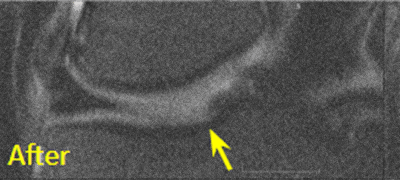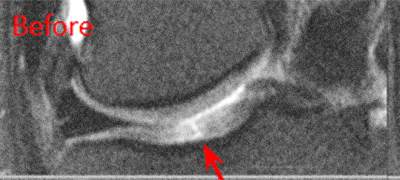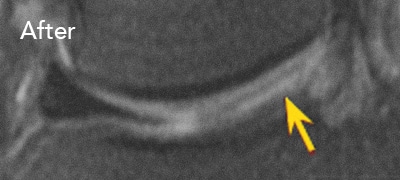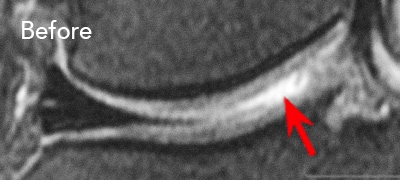Alternatives To Knee Replacement In Ospina Medical – New York, NY
Knee osteoarthritis (OA) is among the most frequently diagnosed orthopedic conditions. Those living with OA are often familiar with the ongoing discomfort and how it can interfere with daily routines and overall quality of life.
Traditionally, individuals over the age of 40 with knee pain linked to osteoarthritis, commonly referred to as arthritis, have been advised to begin with conservative options such as physical therapy, nonsteroidal anti-inflammatory drugs (NSAIDs), or injections like corticosteroids or hyaluronic acid to help manage inflammation and discomfort.
When these measures are not effective, arthroscopic surgery is often the next recommendation. This procedure involves removing or addressing damaged cartilage or soft tissue in the joint. If the surgical outcome does not lead to meaningful relief, total knee replacement is typically presented as the next step.
Alternative to knee replacement surgery for osteoarthritis
Can Knee Surgery Reduce Pain?
Multiple studies2 evaluating outcomes from commonly performed orthopedic knee surgeries have found that these procedures often provide limited benefit, especially for individuals over the age of 40. Even in younger patients, successful results are not guaranteed.
If this is new information, you’re not alone. Many people are unaware that surgery isn’t always the only or most effective option for managing knee osteoarthritis.
At Ospina Medical in New York, NY, procedures using Regenexx lab processes offer an alternative to knee replacement surgery by supporting the body’s natural repair mechanisms through image-guided, injection-based care. Read on to learn more about how this approach may provide a non-surgical option for addressing knee OA.
635 Madison Ave
Suite 1301
New York, NY 10022
Request an Appointment
Call to Schedule Schedule OnlineClinic Hours
| Sunday | Closed |
| Monday | 9AM–5PM |
| Tuesday | 9AM–5PM |
| Wednesday | 9AM–5PM |
| Thursday | 9AM–5PM |
| Friday | 9AM–5PM |
| Saturday | Closed |
How Does The Regenexx Approach Work For Knee Osteoarthritis?
At Ospina Medical in New York, NY, we use an advanced approach to orthopedic care known as Interventional Orthopedics. This less invasive alternative to knee surgery involves ultrasound-guided imaging to precisely deliver bone marrow concentrate, prepared from the patient’s own cells, directly to the area of injury within the joint.
These procedures are designed to support the body’s natural healing response and may reduce the need for surgical intervention in individuals with knee joint damage.
The Regenexx Approach For Knee Arthritis
During evaluations at Ospina Medical in New York, NY, assess joint function by observing movement and may use ultrasound imaging to view the joint’s internal structures in real time. This allows for a more detailed understanding of the source of pain, functional limitations, and contributing factors.
Following the evaluation, a personalized treatment plan is developed to address your specific condition. Your customized care may include one or more of the following:
Regenexx SD Injectate: A patented protocol that uses bone marrow concentrate, which contains your own stem cells
Regenexx SCP Injectate: A proprietary platelet-rich plasma (PRP) formulation with a higher concentration than standard bedside centrifuge methods
Regenexx PL Injectate: Platelet lysate, a refined derivative of PRP designed for specific orthopedic applications
See how the Regenexx approach helped Stephanie with her chronic pain from knee osteoarthritis.
Am I a candidate?Note: As with all medical procedures, those using Regenexx lab processes may result in varying outcomes. Patient testimonials and reviews reflect individual experiences and should not be considered predictive of results for others.
BEFORE and AFTER MRI Images
Below are MRI images from two individuals who received procedures using the Regenexx protocol for knee osteoarthritis. Swipe right to view the MRI taken before treatment, lighter or white areas typically indicate joint damage. Swipe left to see the MRI after the procedure.
Patient 1 MRI: 51 years old
Patient 2 MRI: 46 years old
Patient 1: This individual was unable to resume many daily activities following an unsuccessful microfracture procedure. A percutaneous procedure using autologous bone marrow concentrate, prepared according to Regenexx lab processes, was later performed. Following treatment, the patient reported a return to regular activity levels.
Patient 2: After undergoing arthroscopic debridement, a 3 cm by 4 cm osteochondral defect was identified on the medial femur. Approximately 1.5 years after surgery, the patient received a percutaneous injection of their own bone marrow concentrate. The individual subsequently reported a return to full functional activity.
Am I a candidate?Patient FAQs
The knee is a joint—specifically, the largest joint in the body, where the thigh bone (femur) meets the shin bones (tibia and fibula). The ends of these bones are covered with smooth, slippery cartilage that allows for low-friction movement and helps absorb stress during activity. Two crescent-shaped structures of fibrous cartilage, called the menisci, provide additional joint stability and help distribute weight evenly.
Over time, the knee joint bears a substantial amount of load through regular weight-bearing activity. All joints undergo natural cycles of wear and repair, which may lead to cartilage thinning, bone spur formation, or other structural changes. In some cases, the body’s repair response alters the joint’s shape or alignment. When the joint is no longer properly aligned or lubricated, inflammation, swelling, stiffness, and discomfort can develop a condition referred to as osteoarthritis. Contributing factors may include excess body weight, joint injury, or the effects of aging.
Arthritis is a broad term used to describe inflammation in the joints. There are two primary types:
- Osteoarthritis (OA): Often referred to as degenerative joint disease, this is the most common form of arthritis. It occurs when the cartilage that cushions the joints gradually breaks down, most frequently affecting the knees, hips, and spine.6
- Rheumatoid Arthritis (RA): A chronic autoimmune condition in which the immune system mistakenly targets the synovial lining of the joints, resulting in inflammation and joint damage.7
Yes. Data analysis has shown that individuals with advanced arthritis, including those described as having “bone-on-bone” joint changes, responded similarly to those with less severe joint degeneration. Findings from other published studies have supported this observation as well.8
Degenerative changes from osteoarthritis can be seen on both X-rays and MRI scans. However, symptoms may begin before visible changes appear on a standard X-ray. For this reason, physicians often use MRI, which provides greater sensitivity for detecting early-stage osteoarthritis. MRI also offers three-dimensional imaging, unlike X-rays.
Although cartilage plays a key role in joint function, its loss is not always the primary source of pain. Research has shown that the MRI finding most consistently linked to pain is swelling within the bone, known as bone marrow edema (BME) or a bone marrow lesion (BML). Current studies on knee arthritis pain have increasingly focused on this type of bone inflammation rather than cartilage loss alone.
No, large areas of cartilage are unlikely to regrow. However, procedures using bone marrow concentrate may help in other important ways:
- Replenish cellular support: The body’s natural supply of repair cells decreases with age and joint degeneration. This procedure may help supplement that reserve.
- Revitalize damaged cells: Research has shown that mesenchymal cells can transfer healthy mitochondria to aging or damaged cells, potentially supporting their recovery.
- Address bone lesions: Pain is often related to small bone injuries—known as microfractures—rather than cartilage loss alone.
- Modulate the joint environment: Arthritic joints often contain a mix of inflammatory and destructive factors. These procedures may help shift the environment toward repair.
Request an Appointment
References
1, 4. Regenexx Patient Registry – Knee Outcomes. Lower Extremity Functional Scale (LEFS) questionnaire. Accessed on November 02, 2020.
2. Moseley JB, O’Malley K, Petersen NJ, Menke TJ, Brody BA, Kuykendall DH, Hollingsworth JC, Ashton CM, Wray NP. A controlled trial of arthroscopic surgery for osteoarthritis of the knee. N Engl J Med. 2002 Jul 11;347(2):81-8. doi: 10.1056/NEJMoa013259. PMID: 12110735. [Google Scholar]
Englund M, Guermazi A, Gale D, Hunter DJ, Aliabadi P, Clancy M, Felson DT. Incidental meniscal findings on knee MRI in middle-aged and elderly persons. N Engl J Med. 2008 Sep 11;359(11):1108-15. doi: 10.1056/NEJMoa0800777. PMID: 18784100. [Google Scholar]
Katz JN, Brophy RH, Chaisson CE, de Chaves L, Cole BJ, Dahm DL, Donnell-Fink LA, Guermazi A, Haas AK, Jones MH, Levy BA, Mandl LA, Martin SD, Marx RG, Miniaci A, Matava MJ, Palmisano J, Reinke EK, Richardson BE, Rome BN, Safran-Norton CE, Skoniecki DJ, Solomon DH, Smith MV, Spindler KP, Stuart MJ, Wright J, Wright RW, Losina E. Surgery versus physical therapy for a meniscal tear and osteoarthritis. N Engl J Med. 2013 May 2;368(18):1675-84. doi: 10.1056/NEJMoa1301408. Epub 2013 Mar 18. Erratum in: N Engl J Med. 2013 Aug 15;369(7):683. PMID: 23506518 [Google Scholar]
Sihvonen R, Englund M, Turkiewicz A, Järvinen TL; Finnish Degenerative Meniscal Lesion Study Group. Mechanical Symptoms and Arthroscopic Partial Meniscectomy in Patients With Degenerative Meniscus Tear: A Secondary Analysis of a Randomized Trial. Ann Intern Med. 2016 Apr 5;164(7):449-55. doi: 10.7326/M15-0899. Epub 2016 Feb 9.PMID: 26856620. [Google Scholar]
van de Graaf VA, Noorduyn JCA, Willigenburg NW, Butter IK, de Gast A, Mol BW, Saris DBF, Twisk JWR, Poolman RW; ESCAPE Research Group. Effect of Early Surgery vs Physical Therapy on Knee Function Among Patients With Nonobstructive Meniscal Tears: The ESCAPE Randomized Clinical Trial. JAMA. 2018 Oct 2;320(13):1328-1337. doi: 10.1001/jama.2018.13308. Erratum in: JAMA. 2018 Dec 4;320(21):2272-2273. Erratum in: JAMA. 2020 Mar 10;323(10):1001. PMID: 30285177. [Google Scholar]
3. Regenexx Patient Registry – Knee Outcomes. Numeric Pain Scale (NPS) questionnaire. Accessed on November 02, 2020.
5. Regenexx Patient Registry – Knee Outcomes. Single Assessment Numeric Evaluation (SANE) questionnaire. Accessed on November 02, 2020.
6. NIH: National Institute of Arthritis and Musculoskeletal and Skin Diseases. Accessed October 5, 2020.
7. Arthritis Foundation. Accessed November 02, 2020.
8. Xia Z, Ma P, Wu N, Su X, Chen J, Jiang C, Liu S, Chen W, Ma B, Yang X, Ma Y, Weng X, Qiu G, Huang S, Wu Z. Altered function in cartilage derived mesenchymal stem cell leads to OA-related cartilage erosion. Am J Transl Res. 2016 Feb 15;8(2):433-46. PMID: 27158337. [Google Scholar]




